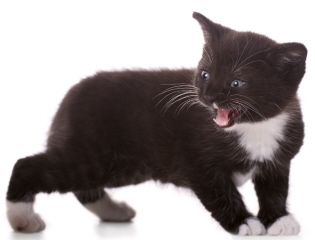|
|
Feline Noise Phobias

What
is it?
A noise phobia is a severe fear of a
specific sound. The fear response is
very complex physiologically
involving a variety of areas of the
feline brain. The more a cat is
exposed to the fear-provoking
stimulus, the more the reactive the
cat may become, especially if the
fear response is reinforced with
attention or affection by well
meaning pet parents who want to
comfort the cat.
What causes noise phobias?
Noise phobias are common in
animals, the most common stimuli
being thunder, gunshots, and
fireworks.
[1]
Fears progress into phobias when
the pet has a genetic predisposition
for fearfulness, or , has learned to
be afraid, or has been traumatized
by an extensive extreme situation
such as a hurricane, tornado, house
alarm, fireworks without being able
to escape. When the cat panics and
gets hurt, the cat may associate
that pain with the noise stimulus.
This sensitivity can cause the cat
to be reactive with a small dose of
the feared noise.
What does it
look like?
When the cat perceives a noise as
threatening, the cat responds
instinctively to survive by
preparing to fight or escape.
The stress response is immediate
with a surge in heart rate, blood
pressure, respiratory rate, and
metabolism.
What to do
-
Fear is
relatively easier to prevent
with positive, early
socialization experiences.
-
Supervision and
control can prevent excess
exposure to a fear stimulus
-
The pet should
not be exposed to the feared
stimulus except during behavior
modification sessions that help
the pet learn to be confident
and relaxed and accept the
stimulus as neutral or positive.
-
The pet parent
needs to learn how to
appropriately manage the
environment and the cat.

[1]
Ackerman L.,
Hunthausen, W., & Landsberg, G.
(2003). Handbook of Behavior
Problems of the Dog and Cat. London,
England: Elsevier Science Limited.
|
"Helping you raise a fabulous feline
friend for life." |
|